
- Home
- Photography Tours
- Diary / Blog
- Galleries
- Foreign Trips
- Tasmania 2016
- NE Queensland 2016
- Western Alps 2016
- NE Spain 2016
- Australia's Wet Tropics 2015
- Australia's Top End 2015
- SW Australia 2015
- Switzerland 2015
- Andalucia 2015
- Belize 2015
- Australia 2014
- Switzerland 2014
- Belize 2014
- Bahama Islands 2014
- Switzerland 2013
- Ecuador 2012-2013
- Florida 2011-2012
- Vancouver Island 2011
- Australia 2010
- Peru 2008
- Bulgaria 2007
- Lesvos 2006
- California 2006
- New Zealand 2005
- Extremadura 2005
- Goa, India 2004
- The Gambia 2003
- About
April 2010
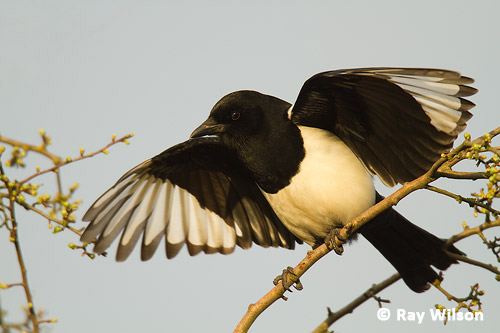
displaying Magpie (Pica pica)
April was a month of mostly bright, settled weather so there was ample opportunity to get photos of the spring courtship and nesting activity of the resident species and a few of the first spring migrants.
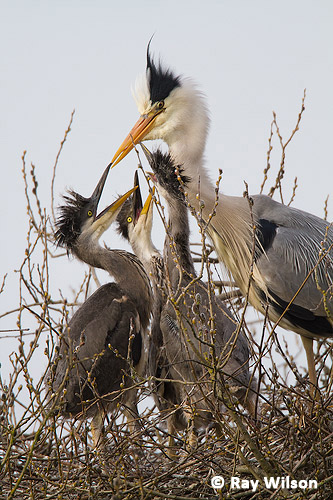
Grey Heron (Ardea cinereus) feeding its chicks |
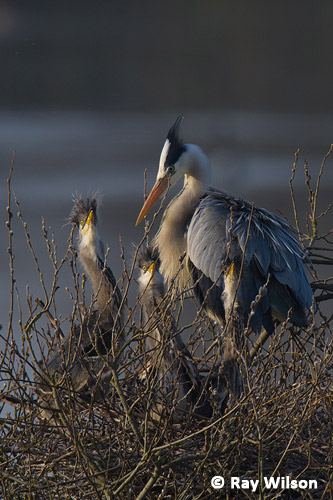
Grey Heron (Ardea cinereus) & its chicks |
Grey Herons begin nesting early, and by the beginning of April the chicks on many of the nests at Attenborough were almost fully grown. Although the nests are reasonably close, getting a clear angle where there are not hundreds of branches getting in the way is not easy and you have to be patient to wait on the birds moving to a position where the branches are not obscuring them too much.
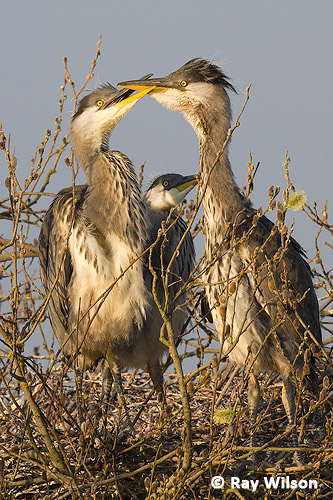
Grey Heron (Ardea cinereus) chicks |
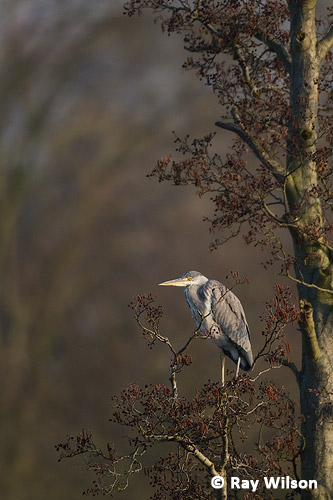
subadult Grey Heron (Ardea cinereus) |
At a slightly more distant nest, a subadult bird was attempting to steal nesting material from an occupied nest...
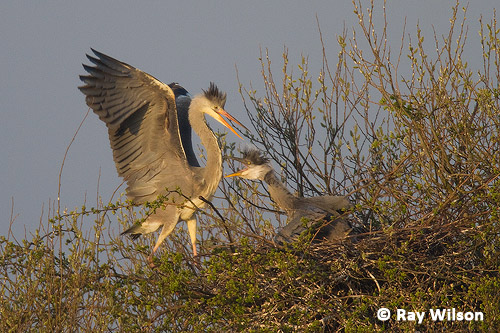
juvenile Grey Heron (Ardea cinereus) defending its nest from a marauding subadult
It was initially prevented from taking any branches by the valiant defence of the nestling (above)...
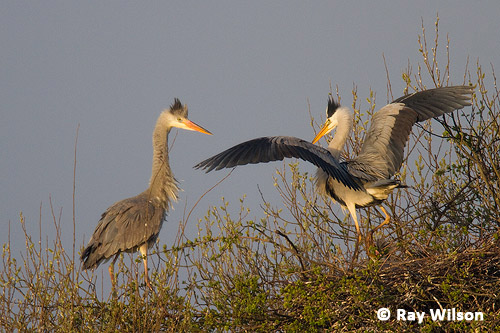
adult Grey Heron (Ardea cinereus) threatening an interloping subadult
...but it wasn't completely repelled until the adult bird returned a few minutes later.
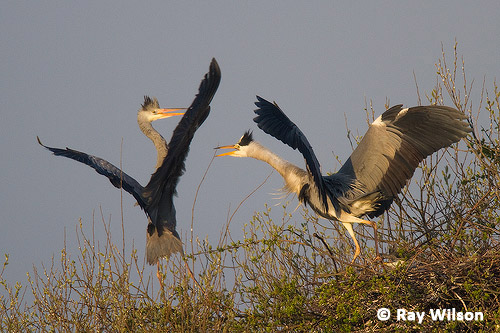
adult Grey Heron (Ardea cinereus) repelling an interloping subadult from its nest
Elsewhere, Cormorants were also busy nesting.
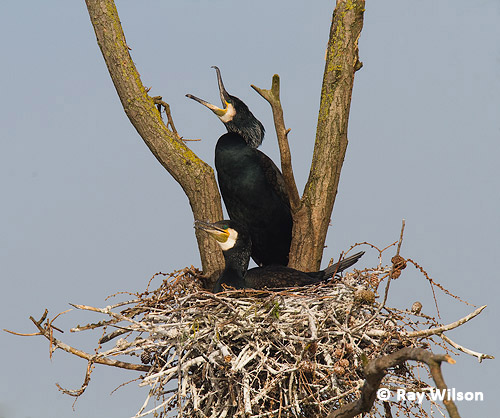
Great Cormorant (Phalacrocorax carbo)
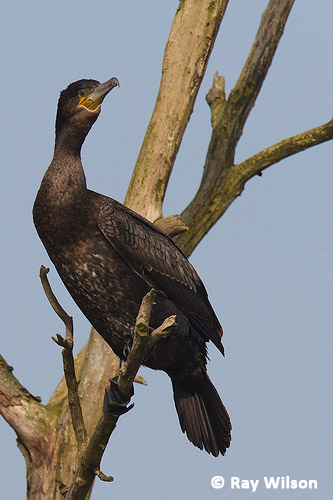 subadult Great Cormorant (Phalacrocorax carbo) |
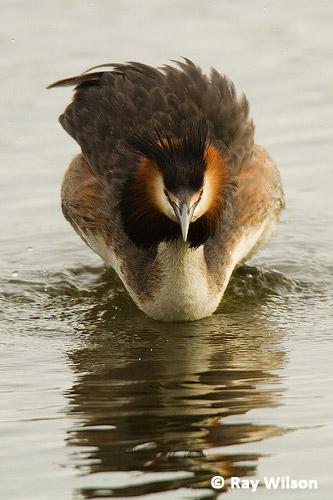 Great Crested Grebe (Podiceps cristatus) |
In the middle of the month, the early spring migrants suddenly started turning up in numbers. Shortly after a beautiful sunrise one misty Sunday morning, I was lucky enough to have a Grasshopper Warbler land on an exposed bramble branch only 8m in front of me and proceed to sing its insect-like, reeling song for a couple of minutes while I happily blasted off shot after shot in the perfect light.
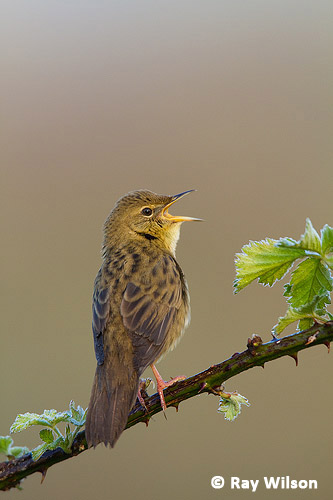
Grasshopper Warbler (Locustella naevia) |

Sunrise over Attenborough Nature Reserve |
The common birds were also quite obliging throughout the month, including numerous Wrens, Robins, and Dunnocks...
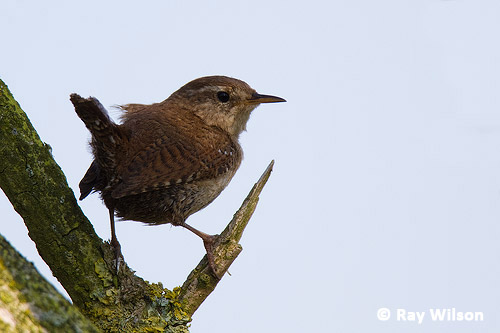
Wren (Troglodytes troglodytes)
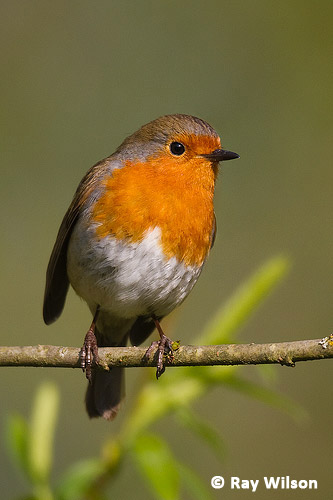
Robin (Erithacus rubecula) |
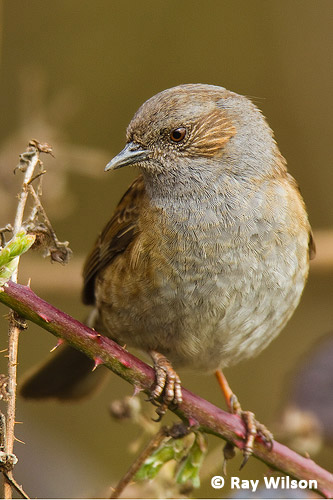
Dunnock (Prunella modularis) |
As the temperatures began to rise, more and more insects began to emerge, including the bee-like hoverfly Eristalis pertinax which is always one of the first hoverflies on the wing in the springtime.
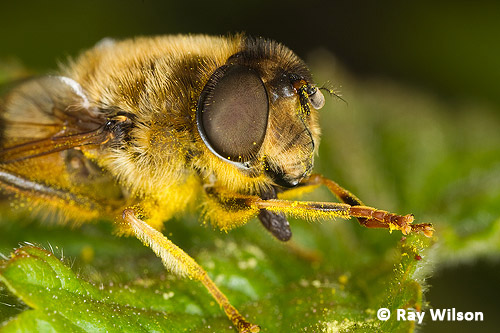
Drone Fly (Eristalis pertinax)
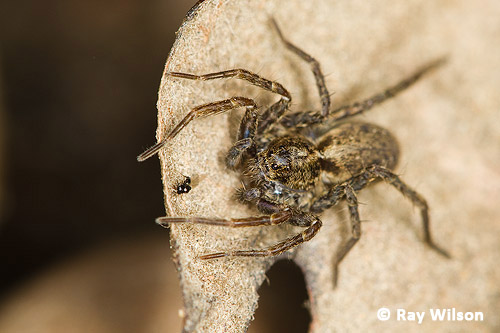
Wolf Spider (Lycosidae) getting ready to pounce on a small fly
Ray Wilson owns the copyright of all images on this site.
They may not be used or copied in any form without prior written permission.
raywilsonphotography@googlemail.com